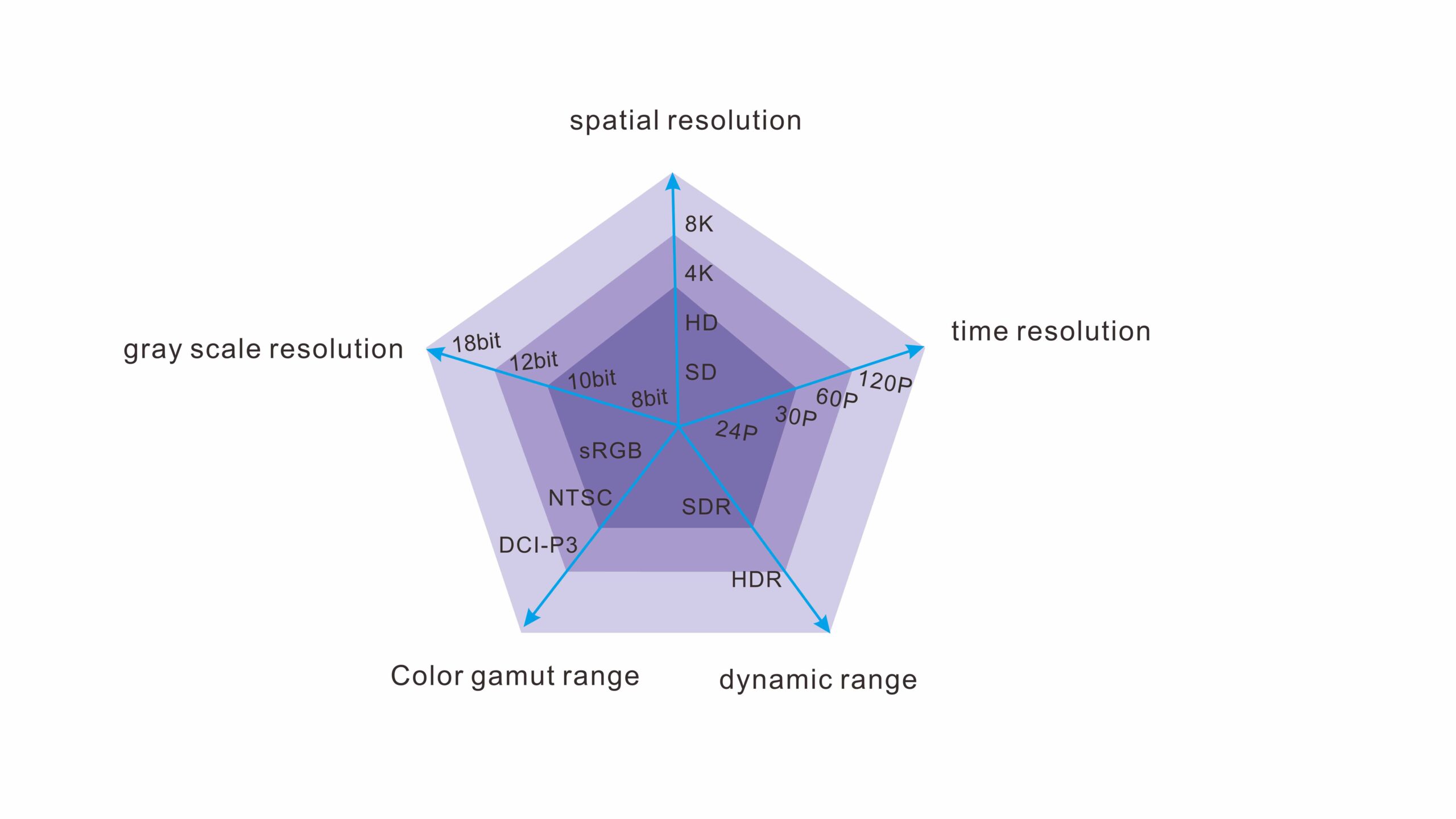LED display five major resolution
LED display is a kind of display device using light-emitting diode (LED) as a light source, which is widely used in indoor and outdoor billboards, TV walls, stage backdrops, etc. The image quality of LED display is affected by a number of factors, including grayscale resolution, temporal resolution, pitch resolution, color gamut range and dynamic range resolution, etc. In this paper, we will focus on the detailed impact of these factors on the image quality. This paper will focus on describing in detail the impact of these factors on image quality.

1. Spacing resolution
Pitch resolution refers to the distance between the pixel points of a display usually expressed in pixel pitch (e.g. the pixel pitch of P1.25 is 1.25mm). Common LED displays are available in 2K, 4K and 8K resolutions, where 2K indicates 2,000 pixel points in each screen height direction. Higher pitch resolutions provide greater image clarity and the ability to show detail, but they also increase cost and energy consumption.
2. Gray-scale resolution
Gray scale resolution refers to the number of different gray levels that a display can show. Common LED displays have 18bit and 22bit grayscale resolution, where 18bit can display 262,144 gray levels and 22bit can display 4,194,304 gray levels. Higher grayscale resolution allows the display to better restore the details and color levels of the image, improving the realism and fidelity of the image. Gray level refers to the brightness performance ability of LED display at different gray levels. A higher gray level means that the display can more accurately show the details of different brightness. Brightness uniformity refers to whether the brightness of each pixel point of the display is uniform, which has a great impact on the overall effect of the image. High-quality LED displays usually have a high grayscale level and good brightness uniformity, which can present a more detailed and uniform image effect.
3. Time resolution
Time resolution refers to the display refresh rate and response time, which is important for displaying fast-moving images or videos. A high refresh rate reduces image ghosting and blurriness and improves the clarity and smoothness of the display. Low latency refers to the response time after the display receives the signal, and lower latency can reduce the unsynchronized phenomenon between image and sound. Some LED displays also support 3D display and virtual display technology, which can provide a more immersive visual experience.
4. Color gamut resolution
Color gamut refers to the range of colors that can be displayed on the display, and the commonly used standards are sRGB and Adobe RGB. a wider color gamut can present richer and more vivid colors, making the image more vivid and realistic.
5. Dynamic range resolution
Dynamic range is the range of brightness that a display can show, usually expressed as a contrast ratio. A higher dynamic range provides better black and white performance, enhancing image layering and detail.
The image quality of LED display is affected by major factors such as grayscale resolution, grayscale level and luminance uniformity, temporal resolution, pitch resolution, color gamut range and dynamic range resolution. Understanding the impact of these factors on image quality can help choose the right LED display to meet the needs of different application scenarios.
Subscribe
Join us to learn the latest technology together

